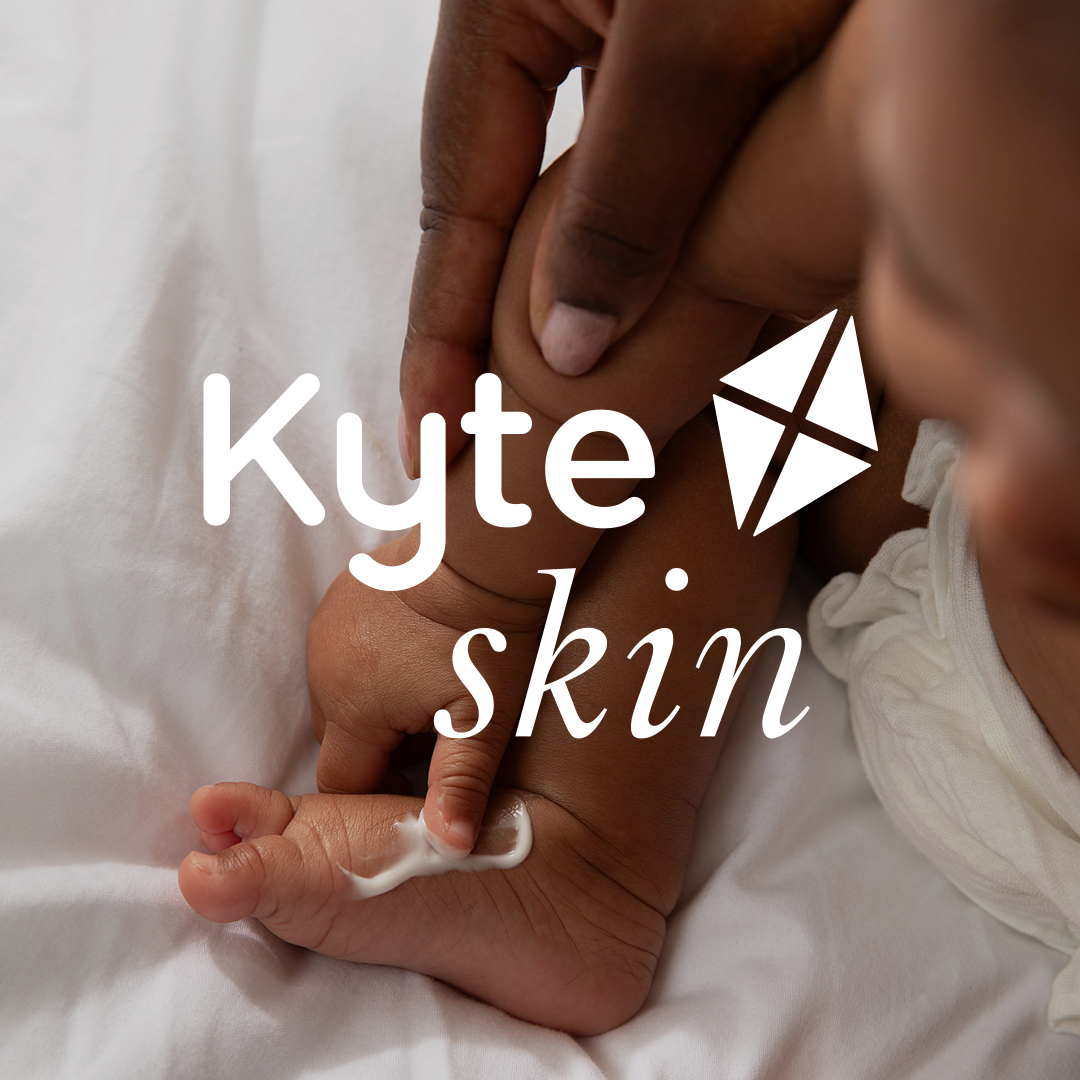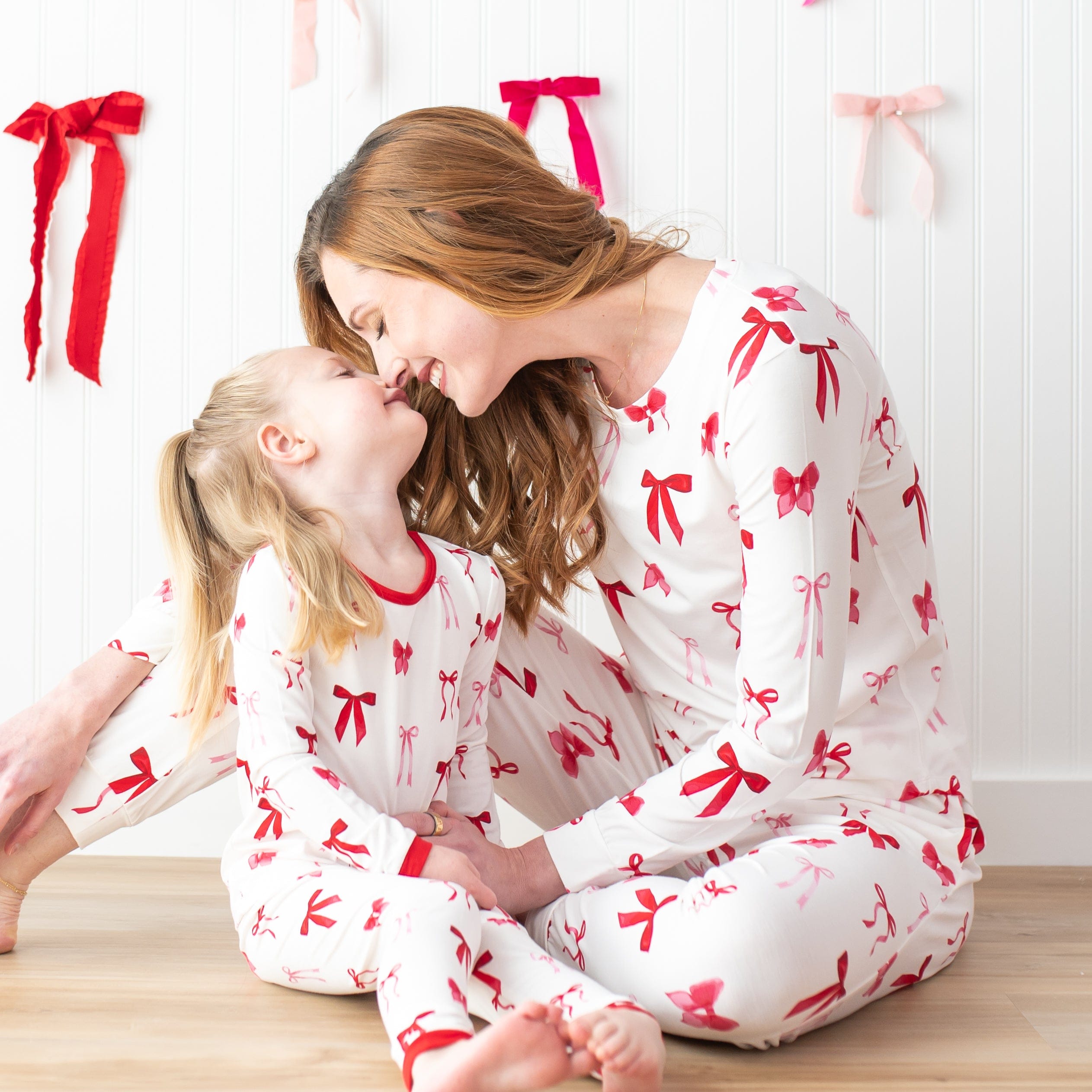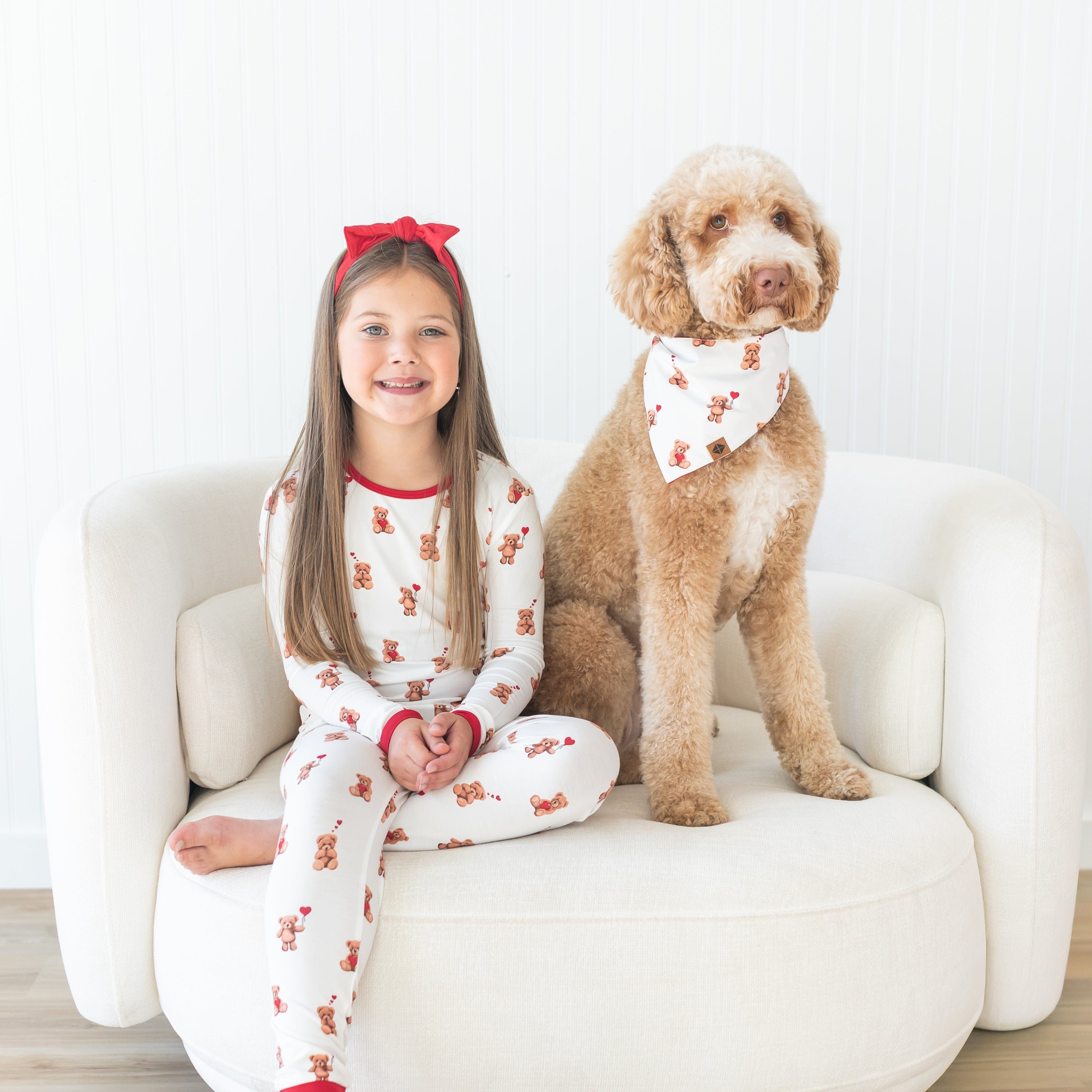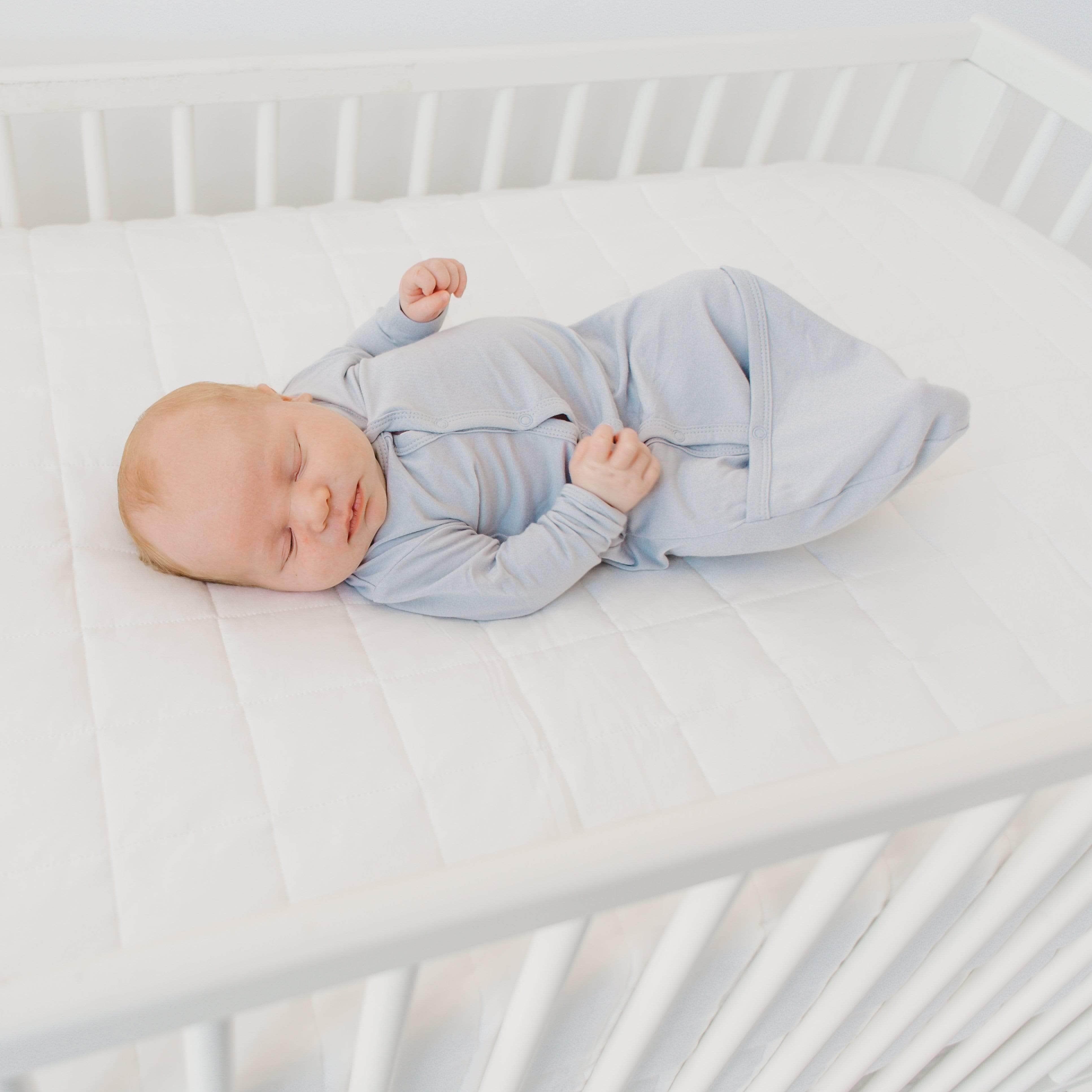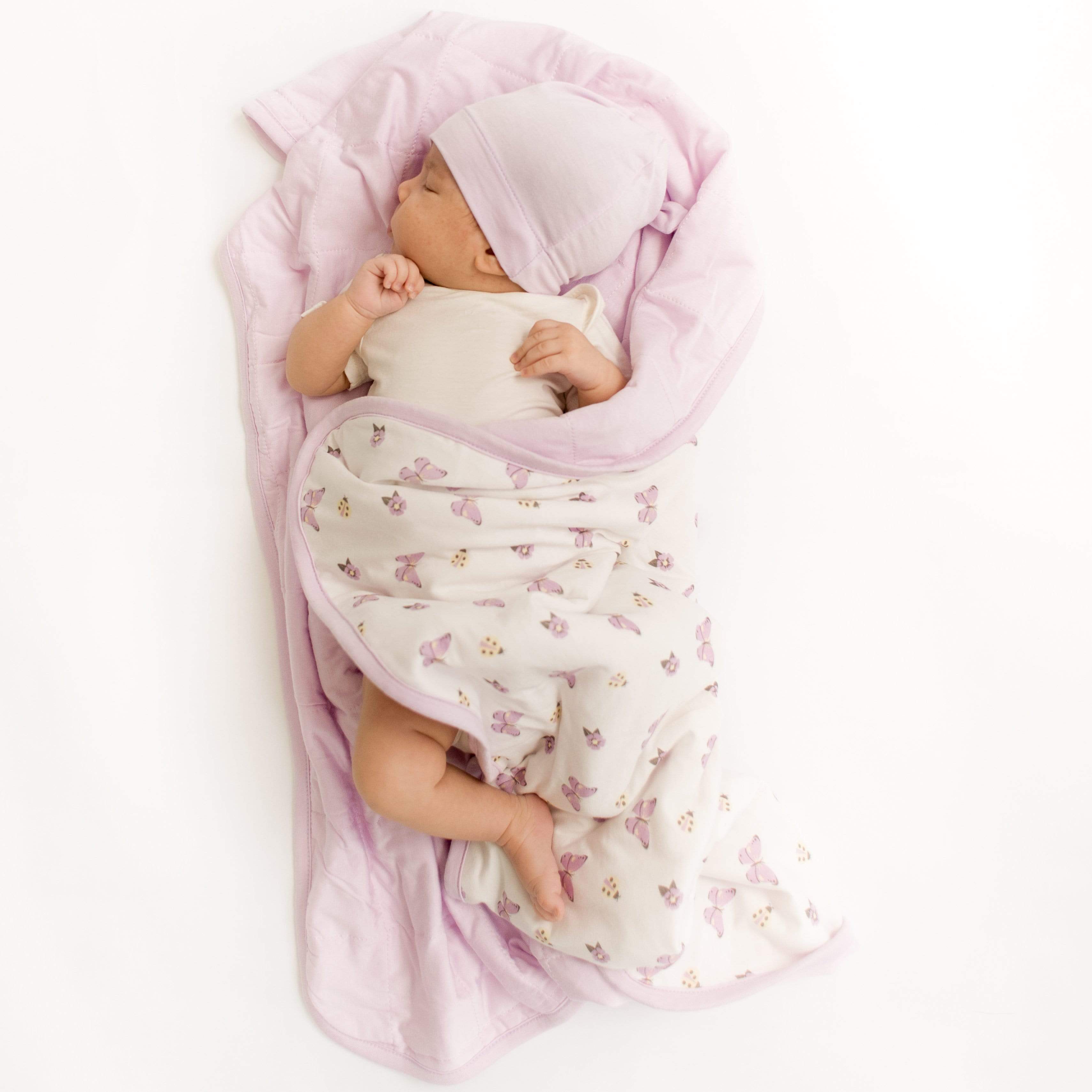Does baby seem to be outgrowing her crib? Like, literally growing too tall? Kicking her legs between the rails? Trying to climb out, or treating it like it’s a jungle gym? Or is there a sibling on the way that will need the crib? These are common questions every parent asks themselves while raising toddlers. While you may think climbing out is a fool-proof sign to start the transition, it actually is not. Here are some tips on reading the signs for a healthy transition from crib to bed and six steps to do it.
Is Your Child Ready to Transition Out of the Crib?
As mentioned, climbing out of the crib is not necessarily a sign that your child is ready for a big kid bed. Sure, it may appear that he “wants out,” but climbing out is more seen by professionals as a way toddlers test boundaries. When you notice this behavior, simply encourage your toddler to stay in his crib. Of course, we don’t expect this to get you very far — after all, reasoning with a toddler is futile.
Tips for Keeping a Toddler in the Crib
You can also lower the mattress to its lowest setting in the crib frame, or even all the way to the floor; turn the crib 180 degrees so that the higher bars face into the room (if applicable); or dress your child in a sleep bag, which will prevent him from physically lifting his legs up and over the rails … not to mention, get comfortable, safe sleep.
What is the Recommended Age to Transition Out of the Crib?
Pediatric sleep consultants encourage parents to wait until baby is 3–4 years old, as this is when a child is developmentally ready to transition. At this age, baby is capable of impulse control (although, may not have mastered it yet) and thus staying in bed instead of roaming the room just because she physically can.
This is also the age that baby will let you know she is ready. Whether that means she actually says “I want to sleep in a big kid bed” or, most importantly, shows that she is a good sleeper, (mostly) complies with her bedtime routine and gets the right amount of sleep consistently. After all, moving from crib to bed should be a celebrated occasion as with your child’s other milestones. It is a reward for being a good sleeper.
Avoid Transitioning Out of the Crib During Milestones
And speaking of milestones — while baby is progressing through one, you should hold off on moving from crib to bed. Making a transition like this will only stress your child out more, especially since it could be seen as taking away their source of comfort and relaxation. Postpone the transition if baby is in the middle of potty training, beginning daycare or pre-school or adjusting to a new sibling.
Trust Your Intuition
With all this said — the common signs and non-signs i.e., climbing out of the crib, of when to transition — it is important to note that all kids are unique and develop at different rates. Several families choose to make the transition around two years old and have success. Others approach the transition as they would sleep training — training baby to be ready for a big kid bed, especially when the arrival of a sibling necessitates the toddler moving out of the crib asap. You know your child best, you both trust each other and, lastly, you are the only one who can gauge his or her readiness with your super mommy or daddy powers.
Tips for Moving from Crib to Big-Kid Bed
Here are the simple steps to transition from crib to bed when your child is ready.
- Ease into the transition by taking a wall off the crib. Now, remember, baby has grown attached to this crib and has relied on it through thick and thin for the past 2–4 years, so let him be a part of the change. Let her see the deconstruction of the crib wall and talk openly about the exciting changes taking place. You could say something like, “You are growing so your crib is growing too.”
- Now that your toddler has unprecedented and unrestricted access to his room, pick up baskets of toys and books to minimize distractions. By placing these objects out of reach, you set your child up for success by reducing his desire to get out of bed. With less stuff to play with, he has an easier time making the choice to stay in bed and sleep. You should also babyproof the room: attach locks to dresser drawers to prevent them from fully opening; bolt dressers and other large furniture to the wall so they cannot tip over; and add child-proof cases to doorknobs so that baby cannot leave the safety of his room.
- Buy a toddler or twin-size bed once your baby has shown good sleep habits in her open crib. Toddler beds usually have a crib-size mattress and guard rails built into the frame, so it isn’t too different from a crib but gives your child just enough freedom to foster a sense of pride and independence. You can also purchase a twin size bed and attachable bed rails, which will prevent baby from rolling out.
Guidelines for Introducing the Big-Kid Bed
Some general guidelines for introducing the bed to your child’s room are to place the new bed in roughly the same spot the crib was located in the room, so as not to add too many changes to your toddler’s safe space. Also, ensure that the joints or screws (for a metal frame) are sturdy and tight, especially if you bought a second-hand bed or your child jumps on the bed. The first step towards success is always safety!
- Take your toddler shopping for new bed sheets or crib sheets (if in a toddler bed), a pillow and/or a new stuffed animal for his new bed. This serves two purposes. One being a reward for good sleep habits and a way to celebrate this milestone in baby’s development. And two, giving your child an active role in his sleep routine. After all, it was his consistent choice to stay in bed and sleep that led to him proving he can sleep in a big boy kid and thus make big boy decisions like which crib sheets to dress the bed or which night light will offer the most comfort.
- Follow the same bedtime routine you had prior to the toddler or twin bed. With all the big changes happening, it is important to keep some things consistent. Follow the same sequence of bathing, brushing teeth, putting on jammies and a sleep bag, reading a story, singing a song, turning off the lights and going to bed. Go to bed at the same time every day. The National Sleep Foundation advises children over 16 months go to bed 4–4.5 hours after their previous wake time. For older kids who do not take a midday nap, the recommendation is 12 hours from waking up in the morning. Read more about your child’s sleep needs in our latest blog post.
-
Finally, sleep in bed and stay in bed. It is expected that your child will get out of bed at some point, even out of their room. Sometimes, toddlers stay in bed initially because they haven’t yet figured out they rule the roost. Once they discover their autonomy, then they venture for midnight walks around the room. Some may even fall asleep on the floor or make their way to your bed in the middle of the night. In these situations, guide your child back to bed with as little emotion as possible. The less emotion and discussion, the less your child will feel rewarded or punished for their behavior — with little reaction from you the parent, your child has less motivation to continue the behavior.
Ensure Proper Sleepwear
This is also a good time to consider dressing your child in a sleep bag walker, which will allow her to walk without tripping while also regulating her temperature and replacing a blanket if you are uncomfortable sending child to bed with one. (The American Academy of Pediatrics advises blankets are safe for children over the age of one.)
The time will come for every child to part ways with their crib but that timing varies by child. Pay attention and your child will let you know when he or she is ready. Begin the transition gradually by first taking a wall off the crib, then moving to a toddler bed and ultimately a twin or full-size bed. Follow these six simple steps with consistency and you will have an independent sleeper (and maybe even one less bed to make) in just the right amount of time.
By: Jessica Murrugarra

